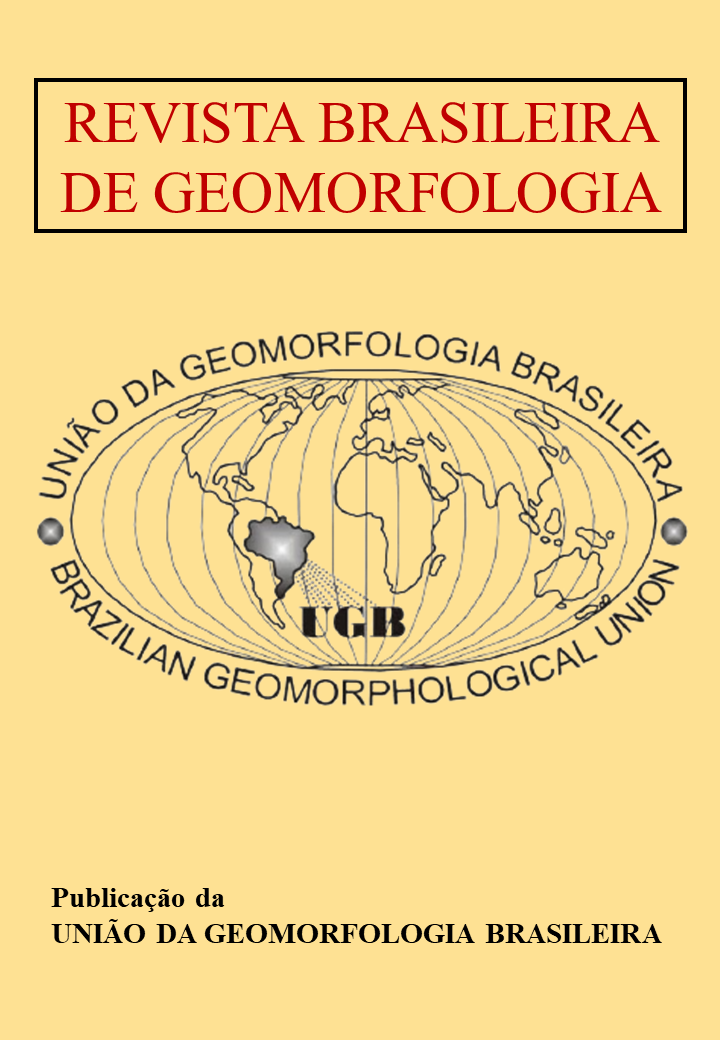Multi-scale analysis applied to the evaluation of linear water erosion in a subhumid tropical area located in the Southwest region of the state of Goiás - Brazil
DOI:
https://doi.org/10.20502/rbgeomorfologia.v24i00.2368Keywords:
Análise Erosiva, Escalas de Abordagem, Transferência de Energia, Sistema VertenteAbstract
Linear water erosion involves disintegration and transport of soil materials resulting from the energy of surface runoff, and its study may involve different variables and methodologies at different scales. This paper presents a methodological proposal aimed at analysis at three scales of approach involving relationships between morphological and sedimentary compartments and patterns of density and area of erosive contribution; the morphometric, morphographic, pedological, land use/occupancy/management configuration and magnitude of the features; and the relationship between surface runoff/altimetric gradient, in reference to the Second Law of Thermodynamics, and the erosive incisions in the slope system located in the munícipe of Mineiros and surroundings, Southwest of the state of Goiás, Brazil. The proposal was tested for 5679 erosive features (gullies) mapped by high-resolution imagery between 2016 and 2020 were used where the gullies was distributed on different Morphopedological Compartments (CMP). The results showing each CMP presents: a concentration pattern of erosion features and erosive contribution area; typical morphometric and morphographic configuration, as well as preferential segments in which the relationship between flow length, slope and slope shape, associated with soil types and land use influencing the erosive pattern and contribution area.
Downloads
Downloads
Published
How to Cite
Issue
Section
License

This work is licensed under a Creative Commons Attribution-NonCommercial 4.0 International License.
Author (s) retain copyright and grant the journal right of first publication with the work simultaneously licensed under the Creative Commons Attribution License that allows sharing the work with recognition of its initial publication in this journal.








